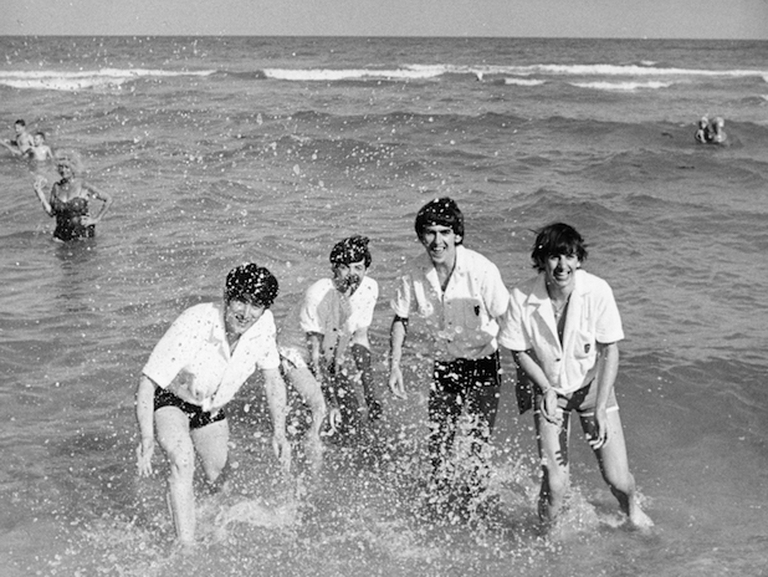
Renzo Piano’s archive in Genoa houses the great architect’s projects. It brings young people closer to creative work, which he equates to “looking into darkness without fear”.
Since 2009 Karen Aplin is a researcher in the Physics division at Oxford University. Before getting to manage the teaching laboratories of this renowned English university, Karen obtained a doctorate degree in atmospheric physics at the Department of Meteorology at the University of Reading, but also a diploma in music performance from Trinity College, London. Metheorology
Since 2009 Karen Aplin is a researcher in the Physics division at Oxford University. Before getting to manage the teaching laboratories of this renowned English university, Karen obtained a doctorate degree in atmospheric physics at the Department of Meteorology at the University of Reading, but also a diploma in music performance from Trinity College, London.
Metheorology and music have always been her passions, so in her latest works she wanted to discover the possible connections between music, climate change, emotions and human preferences.
Her most recent study tries to demonstrate that our mood is highly influenced by the weather using and taking advantage of a data base of over fifteen thousand songs. In 2011, the researcher had already studied this phenomenon, employing, however, a classic music database. This time, Karen and five other colleagues examining the legends of pop music were statistically supported by their hypotheses.
The team inspected some of the most famous English songs written since 1950 up to now and found about eight hundred songs with references to meteorological phenomena in the lyrics, title and in the band or artist name.
In addition, of the top five hundred songs of all times listed by Rolling Stone magazine in 2011, 7 percent have references to the weather. Bob Dylan, John Lennon and Paul McCartney were the most profilic in this category but also Bill Withers (remember for example Ain’t no sunshine) and Billie Holiday, who lamented the breakup with a girl in Stormy weather.
Firstly, the team noticed that the artists used weather metaphors to describe human emotions or to reflect on a relationship for example. Moreover, most of the times the sun is the positive element, while the rain is negative, except for some Country and Western songs where rain brings crops and expected and desired climate change.
But this trend is likely to change soon:
In Europe, “people are like: ‘Oh, yes!’ when it’s summer. But if it’s going to be 40 degrees (Celsius, 104 degrees Fahrenheit) every summer for 10 years… that might change how people feel about the weather and the emotions they link to it.
said Karen Aplin.
Sally Brown, researcher at the University of Southampton and Alpin’s fellow worker added:
We were all surprised how often weather is communicated in popular music (…) And in 1969 George Harrison wrote the Beatles’ hit ‘Here Comes The Sun‘ after being inspired by one of the first sunny days of spring after a ‘long cold lonely winter. References to bad weather in pop songs were statistically more significant in the USA during the more stormy 1950s. This highlights the potential for a change in music lyrics too.
So, climate change will intrude slowly into almost every area of life: from our daily habits to what we eat, up to arts and music.
Siamo anche su WhatsApp. Segui il canale ufficiale LifeGate per restare aggiornata, aggiornato sulle ultime notizie e sulle nostre attività.
![]()
Quest'opera è distribuita con Licenza Creative Commons Attribuzione - Non commerciale - Non opere derivate 4.0 Internazionale.
Renzo Piano’s archive in Genoa houses the great architect’s projects. It brings young people closer to creative work, which he equates to “looking into darkness without fear”.
The 50th anniversary of the Moon landing on 20 July has awakened the fantasy of many. Here’s the perfect playlist of musicians who have let themselves be inspired by the universe and its celestial bodies.
N’we Jinan is a Canadian record label that gives First Nations students their voice back by allowing them to create their own music in mobile recording studios.
The Australian songwriter, who became famous with Follow the Sun, is back with Walk Away, a new and powerful ode to freedom. He’s about to set off on a world tour. Our interview with Xavier Rudd.
Three teenagers from New Zealand sing in the Maori language about abuse at the hands of British colonisers. Thanks to their thrash metal music, young people are being attracted to native culture.
There’s no room for anger, resignation, or desire for revenge in this playlist. There’s just the moral obligation of retracing and telling the stories that can’t go lost and forgotten all over again. We do so through music.
Le canzoni più belle del 2017 secondo LifeGate Radio. Con questa playlist lanciamo la nostra collaborazione con Spotify Italia che vi farà ascoltare la musica migliore, selezionata.
An organisation that unites over 1,000 mainly Maya women in Guatemala has expressed alarm that indigenous handicrafts, textiles called “huipiles” in particular, are under threat because underpriced industrial fabrics appropriating indigenous patterns have flooded the Guatemalan market, depriving many native women of their main source of income. Read more: Down to Xjabelle, the fashion collection by a young designer with Down
Rwandan creatives share a common dream: they want to use their art to bring about positive change in society, as well as put their country on the map. They’re mostly young, ambitious, self-taught and have a strong desire and determination to challenge mentalities, move forward and grow. In her documentary RWANDArt: A new creative generation, which








